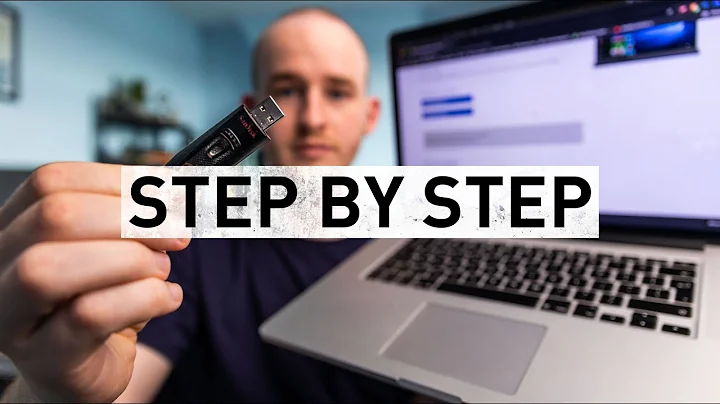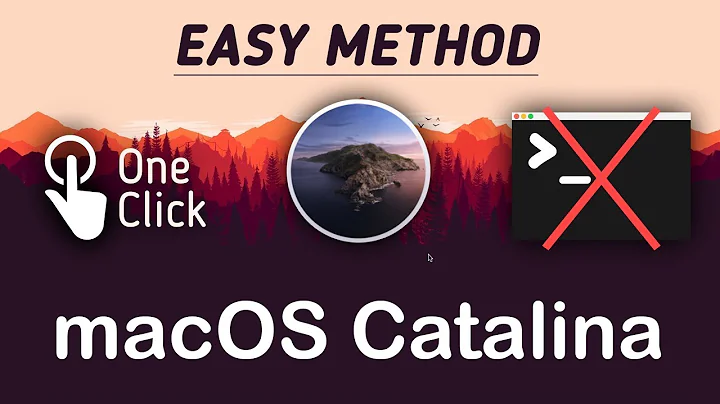can't make bootable usb on mac
Solution 1
Here's my own answer:
OK, so I figured it out, largely thanks to this extended thread on macforums
http://forums.macrumors.com/showthread.php?t=1329407
However, I'm going to offer a summarized version here. Whoever's responsible for the ubuntu page on this (the one I linked to in my OP) really should get it changed. Those instructions just don't work.
Here's what you need:
Download Ubuntu.iso
Download and install rEFIt from here http://refit.sourceforge.net
Download and install the app UNetbootin from here: http://unetbootin.sourceforge.net
A 4GB Flash Drive formatted to FAT32
free space on an internal or external disk to boot from and install too.
Create flash drive files:
Start up UNetbootin. Choose the ubuntu iso as the source and the flash drive as the destination. When that's finished you'll get a warning that the USB is not bootable on a mac. That's expected.
Create partitions on hard disk:
Open Disk Utility and choose the internal or external disk that you're going to use. Create a 2GB partition on it, formatted to FAT32. Create another partition (you can choose FAT32 for this too) the same size as you want your final install to be (I have a 750GB internal disk on my mac, so I gave ubuntu 100GB of that).
Get device names:
Open Terminal.app on your mac and copy/paste this command (you can type it, but there'll be some more complex commands later that you might want to cut and paste to avoid errors)
diskutil list
From the output, identify both the flash drive and the 2gb partition. They will have names such as /dev/disk1s1 and dev/disk0s4 for example. Make sure you pick the right name, or you could end up doing some damage.
Dismount devices:
Open Disk Utility.app, and click on the flash drive in the sidepanel. Hit the 'dismount' button in the taskbar above. Do the same for the 2gb internal partition.
Move files from flash drive to HD partition:
Copy and paste this into Terminal, but DO NOT press 'return':
sudo dd if=/dev/disk1s1 of=/dev/rdisk0s4
Change the device names to match those you found in step 3. The first device name is source (the flash drive), the second one is the destination (the 2gb fat partition on your internal disk). Notice that I've added an 'r' before 'disk' on the output device. That's deliberate and you should make sure you add it too, as it speeds up the copy process considerably.
Double check that line is correct, then when you're ready, press 'return' and enter your admin password (it'll be invisible when you type it).
Remove flash drive:
When that eventually completes, dismount and remove the flash drive. You don't need it anymore.
Fix partition tables:
Restart your mac with the option key held down. From the rEFIt menu, choose 'sync partition tables'. Confirm with 'y' and exit. Then choose 'restart' from the rEFImenu.
Start up ubuntu live CD:
You should now see the Penguin logo. Click on it to start the Ubunutu Live CD.
Solution 2
I got ubuntu installed on my IMac mid 2011 following these instructions. Although I later figured out a way to cut the steps in half. I created an Ubuntu image directly into the HD partition without using the USB
Here's what I did:
-
Partition the Mac hardisk using disk utilities:
Create a 40GB fat32 partition for Ubuntu
Create a 5GB partition to hold the bootable Linux image
Use Unetbootin to directly create the image in the 5GB partition.
Restart - hold down option key - boot into Ubuntu using rEFIT.
Hope this helps. Thanks for the the great post.
Related videos on Youtube
phil
Updated on September 18, 2022Comments
-
phil over 1 year
I've been trying to do this since yesterday, following the instructions given on ubuntu.com's official page here:
http://www.ubuntu.com/download/help/create-a-usb-stick-on-mac-osx
I can complete every step without error. However, when restarting the mac, the flash drive simply reports 'missing operating system, press any key...'. From there, there's nothing I can do except a hard reset.
I've tried Unetbootin, but that won't create a usb that's bootable from a mac.
edit: I've also fixed the partition tables with rEFIt, but still no joy.
Any suggestions?
-
 Admin about 11 yearsI struggled with this myself. Finally found a way, and it doesn't involve the terminal too. This is how I did it: How To Install Ubuntu 13.04 on a Macbook Air via USB Drive
Admin about 11 yearsI struggled with this myself. Finally found a way, and it doesn't involve the terminal too. This is how I did it: How To Install Ubuntu 13.04 on a Macbook Air via USB Drive
-
-
 jkronlachner about 11 yearsYou are using "s1" from your /dev/disk1. Is that the FAT partition? I have 3 partitions, GUID partition table, EFI and FAT. Not sure which one to pick :/
jkronlachner about 11 yearsYou are using "s1" from your /dev/disk1. Is that the FAT partition? I have 3 partitions, GUID partition table, EFI and FAT. Not sure which one to pick :/ -
Nil about 11 yearsSince the problem is solved, could you please select your answer as having solved your problem?
-
Jeremy about 6 yearsIt's very hard to follow your comment, please consider using the formatting tools and punctuation.




